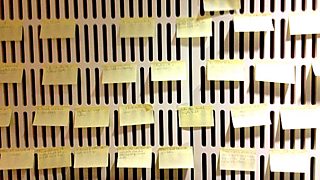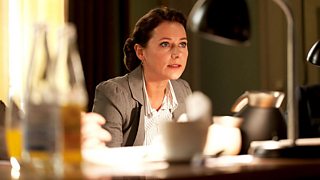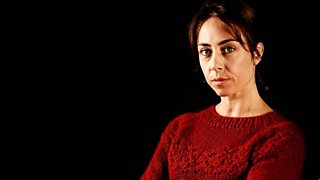Wanted: decent female characters for long-term relationship with writers
Sally Stott
Writersroom Reader
βJane is simultaneously beautiful yet plain, assertive yet vulnerable, and strangely charismatic for a woman who has very little to say.β
βTara is a gently hysterical, workaholic drone β a highly intelligent woman held back by nothing except an exceptionally plain face.β
βErica is surprisingly attractive considering she is in her mid-40s and has recently had half of her thin, but not too thin, body torn apart by a werewolf.β
These are a few examples of the way female characters are described in many of the scripts sent in to theΜύwritersroom that we, as script readers, get to read. They are frequently derogatory, incongruous and judgemental, and range from the hilarious to the horrific - sometimes within one sentence. In many instances they focus heavily on physical appearance in a way that is neither useful to know nor possible to film.Μύ
You may be disappointed (or relieved) to learn that I made up Jane, Tara and Erica. Much as I would like to, I canβt show you real female character descriptions submitted by real writers. These can only be viewed by trained readers wearing industry standard protective goggles. Instead, I have created some far less extreme imitations to a) demonstrate what the problem is and b) gently encourage those who need encouragement to write women in a more insightful way.

Post it notes in the Script Room
During the last sift - where we read 1780 scripts - a few of us readers copied the most bizarre female character descriptions we came across onto post-it notes and stuck them on the wall (see the picture above). Some descriptions of male characters also worked their way in. The latter tended to go something like this:
βDave is an everyday bloke with no sense of fashion, but a cracking sense of humour. He is likable slacker, neither attractive nor unattractive, but very good at writing.β
Dave is a familiar figure to us. He often appears in sitcoms. Often he is called Dave. Sometimes itβs Steve.
The female characters on the post-its - women like Jane, Tara and Erica - were described less sympathetically with a combination of reverence and disgust. They were good looking but thick, glamorous but old, hot but vain. However, worst of all, they inevitably ended up dating Dave.
If all of the above sounds like predictable male fantasy stuff to you, thatβs because a lot of it is. Using equal opportunity forms, we can estimate that two thirds of the writers who submitted scripts to the last Script Room were male - and although not all of the dubious female character descriptions were written by men, a lot were. Μύ
You might ask whether it really matters how a character is described. Isnβt it what they do and how they behave that counts? Yes, but a nonsensical and hackneyed character description invariably leads to a nonsensical and hackneyed character β one that is underdeveloped and difficult to care about and understand. Characters that are defined predominantly by their looks are not interesting to spend time with. What might fulfil the needs of a magazine shoot is unlikely to sustain a ten-part television series.
An ideal character description is probably simply a short summary of need-to-know information. For instance, by Gwyneth Hughes contains one that goes like this: βHis wife ALMA brings him a final dirty cup as he finishes his perfect clearing up routine. She is 61, small, bright, determined, unglamorous, and English.β What Alma does is more important than what she looks like. Indeed, most of the scripts in theΜύ choose to show the characters in action rather than describe them at all.

Birgitte Nyborg (Sidse Babett Knudsen) in ΒιΆΉΤΌΕΔ Four's Borgen
Writing recently about the excellent second series of Danish TV show Borgen (which has just finished airing on ΒιΆΉΤΌΕΔ Four), The Sunday Timesβ AA Gill said:
Μύ βThe female characters are strong, attractive, independent, flawed, both sexual andΜύΜύ businesslike. But theyβre not exceptional: theyβre simply equal, which is surprising, and reminds us how stereotypical most English-language drama still is.β
If English-language drama is stereotypical (and is it?), can writers be blamed for copying what they see in comedies, dramas and films that get made? Itβs true - you donβt have to do more than turn on your TV or visit your nearest cinema to find clunky, predictable depictions of women worse than any I could make up. Yet creating your own versions of these wonβt make them to go away. The world isnβt perfect and neither is every script ever produced. Rather than emulate mediocrity, why not aim to get rid of it?ΜύΜύ

Detective Inspector Sarah Lund (Sofie GrΓ₯bΓΈl) in The Killing
There are interesting female characters out there β and Scandinavian dramas, such as , and , are currently a great place to find them, as is the . If you think, like me, that there should be more β and your imagination isnβt filled with a giant βhot or notβ list, but believable women with interesting stories β perhaps you could write about them for the next ? The window for submissions opens today.
An extended version of this post (with quiz!) is available
*Sally is unable to respond to queriesΜύabout specfic scripts sent to ΒιΆΉΤΌΕΔ writersroom.
Script Room is open for submissions of original scripts from writers from 14th February 2013 -Μύuntil 5pm, 28th March 2013.Μύ For more information on how to send us your script and to download the coversheet, visit the of the writersroom website.
